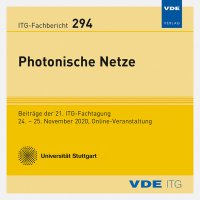Complexity Reduction of Volterra Nonlinear Equalization for Optical Short-Reach IM/DD Systems
Conference: Photonische Netze - 21. ITG-Fachtagung
11/24/2020 - 11/25/2020 at online
Proceedings: Photonische Netze
Pages: 6Language: englishTyp: PDF
Authors:
Wettlin, Tom; Pachnicke, Stephan (Chair of Communications, Kiel University, Kiel, Germany)
Rahman, Talha; Wei, Jinlong; Calabro, Stefano; Stojanovic, Nebojsa (European Research Center, Huawei Technologies, Munich, Germany)
Abstract:
We investigate approaches to reduce the computational complexity of Volterra nonlinear equalizers (VNLEs) for short-reach optical transmission systems using intensity modulation and direct detection (IM/DD). In this contribution we focus on a structural reduction of the number of kernels, i.e. we define rules to decide which terms need to be implemented and which can be neglected before the kernels are calculated. This static complexity reduction is to be distinguished from other approaches like pruning or L1 regularization, that are applied after the adaptation of the full Volterra equalizer e.g. by thresholding. We investigate the impact of the complexity reduction on 90 GBd PAM6 IM/DD experimental data acquired in a back-to-back setup as well as in case of transmission over 1 km SSMF. First, we show, that the third-order VNLE terms have a significant impact on the overall performance of the system and that a high number of coefficients is necessary for optimal performance. Afterwards, we show that restrictions, for example on the tap spacing among samples participating in the same kernel, can lead to an improved tradeoff between performance and complexity compared to a full third-order VNLE. We show an example, in which the number of third-order kernels is halved without any appreciable performance degradation.


